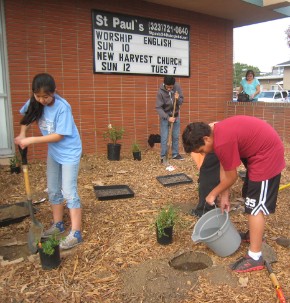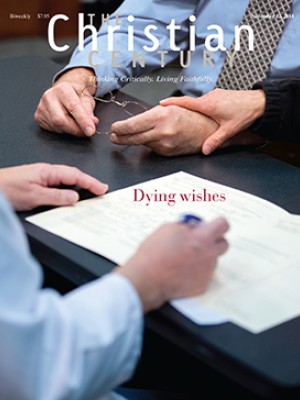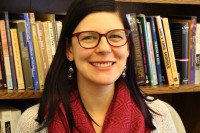Amid drought, churches draw together

In what is supposed to be the harvest season, many parts of California are feeling the effects of the drought that has raged for most of the year.
“We don’t know what’s going to be coming out of the fields, if anything,” said Brian Malison, lead pastor of Christ Lutheran Church in Visalia, in the southern part of the Central Valley. “There were a lot of farmers in the spring who didn’t put down seed or let their fields go.”
In an area where many people are involved in the agriculture industry, people have had to make decisions about how best to limit the devastation of the drought. Sometimes that has meant not planting, because the costs of hiring workers for the harvest are too high.
Read our latest issue or browse back issues.
The U.S. Drought Monitor, produced by the U.S. Department of Agriculture and other agencies, as of mid-October showed much of California and parts of Nevada and Texas at the highest level—“exceptional drought.” Much of the west is experiencing “moderate to extreme drought.”
Christ Lutheran held a fund-raiser for the families of farmworkers who were facing limited employment opportunities. Malison spoke with the director of the local food bank in early summer and learned that there wasn’t federal or state funding to supply diapers, so the church donated 100,000 of them.
The congregation has also addressed the stewardship of water in its worship services, “recognizing how water has played a deep and important part in the history of God’s people,” Malison said. “We begin with a personal reflection, ‘how am I doing?’”
The community has a new perspective on the preciousness of water, he said. “There’s a deeper appreciation of what water means. I think this is going to leave an indelible mark on people’s spiritual lives.”
Prayers for rain need to be framed with careful theology, Malison noted.
“I think it requires a tremendous amount of sensitivity when asking God to do things in the atmospheric sense,” Malison said. “I would love it if we had 20 inches of rain this year, but if we had 20 inches of rain in two weeks, the effects would be equally catastrophic in flooding out fields.”
In nearby Hanford, First Christian Reformed Church has participated in three community prayer services and hosted one in the past 14 months, said Justin Carruthers, copastor and director of congregational ministries. “It always starts with a spirit of praise and adoration, and then we can move into our petitions.”
The congregation includes many people who work in the dairy industry and who feel the effects of the drought daily, he said. Over the past four to five years the drought has worsened, and recently part of the community saw its well go dry.
Yet the prayer services have drawn the community together amid the loss, as in a funeral, he said.
Further south in the state, congregations are connecting around more careful use of the water they have, now and for the future.
Lisa Novick—director of outreach and K-12 education at the Theodore Payne Foundation for Wild Flowers and Native Plants in Sun Valley—works with community groups, including congregations, to teach how native plants are important for combating drought.
“I see the drought as an opportunity because so much of Southern California and indeed the West has been planted with nonnative plants that have been brought by people from where they came from,” she said. “People can reevaluate the practices that just become habit.”
She received more requests from congregations as the drought has continued. More than a dozen churches that are part of a San Fernando Valley consortium want to change the landscaping around their churches. Native plants use one-seventh of the water that nonnatives do.
“Churches and any place of worship are the perfect place to do this kind of landscape conversion because you’ve already got people there who know the importance of being mindful,” she said, “and already want to be of benefit to their community.”
One congregation she has worked with, St. Paul’s Lutheran Church in Monterey Park, has partnered with the Montessori school that rents part of the church to plant a native garden, which is used as an outdoor classroom.
“Plants are more than just furniture for the garden, they help sustain us through supporting the pollinators, birds, and other insect and animal life that are part of ecosystem services,” Novick said, “such as reforestation and watershed protection.”
St. Mark’s Episcopal Church in Glendale, with high visibility on a boulevard, is swapping out its lawn and will have discreet signs for passersby to read.
“We want to educate people through the beauty of these gardens that they don’t have to sacrifice aesthetics to do the environmentally responsible thing,” Novick said.
As she works with children and youth, she finds that middle-school and high-school students are highly aware of climate change and environmental destruction.
“Every time I do a garden conversion and work with this age of kids especially, they’re really on fire and driven, because they feel like it’s not all doom and gloom,” she said. “We can do something where we are.” —Christian Century







